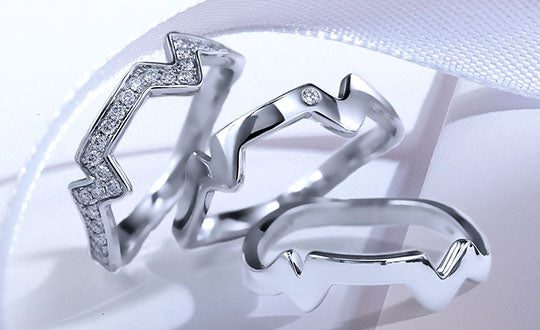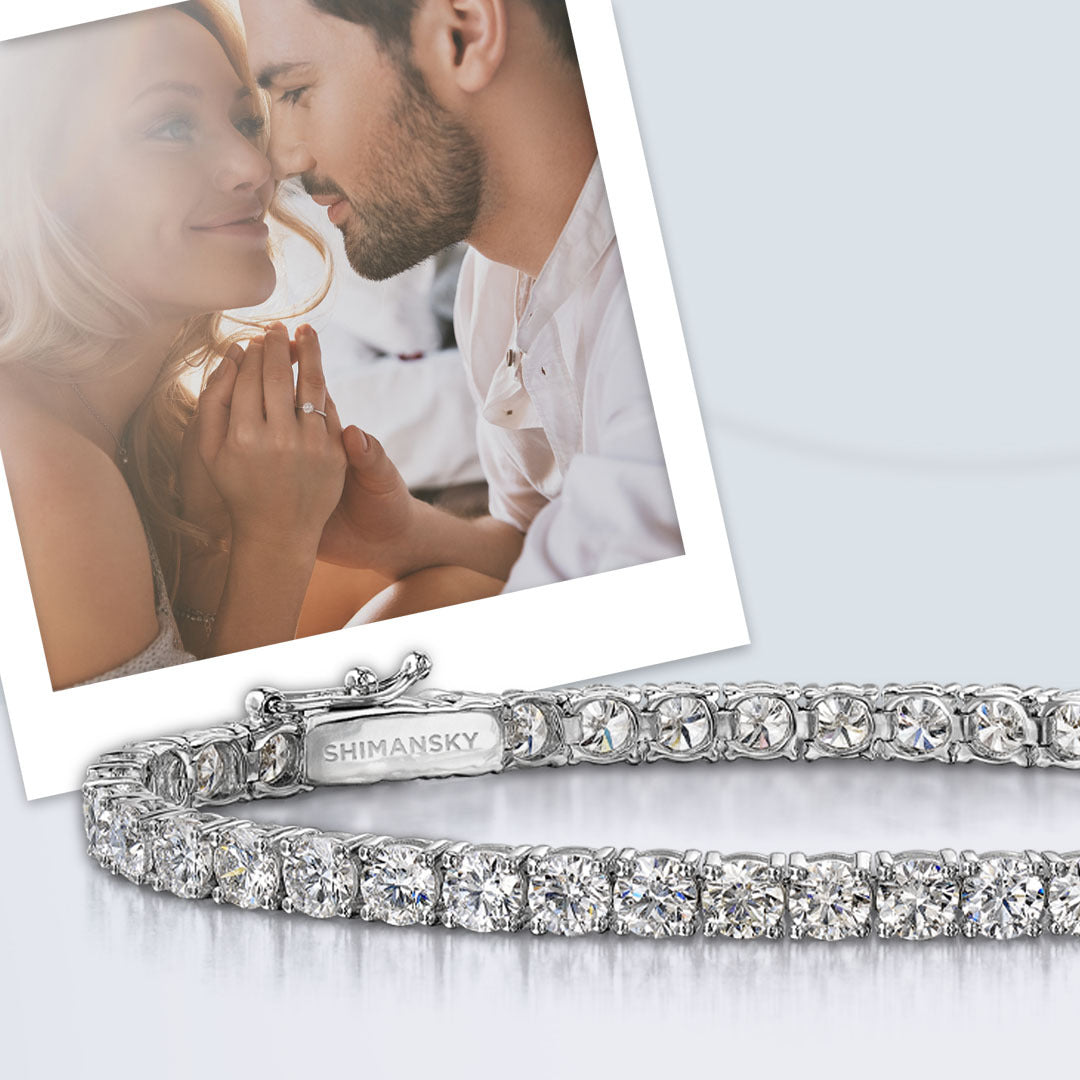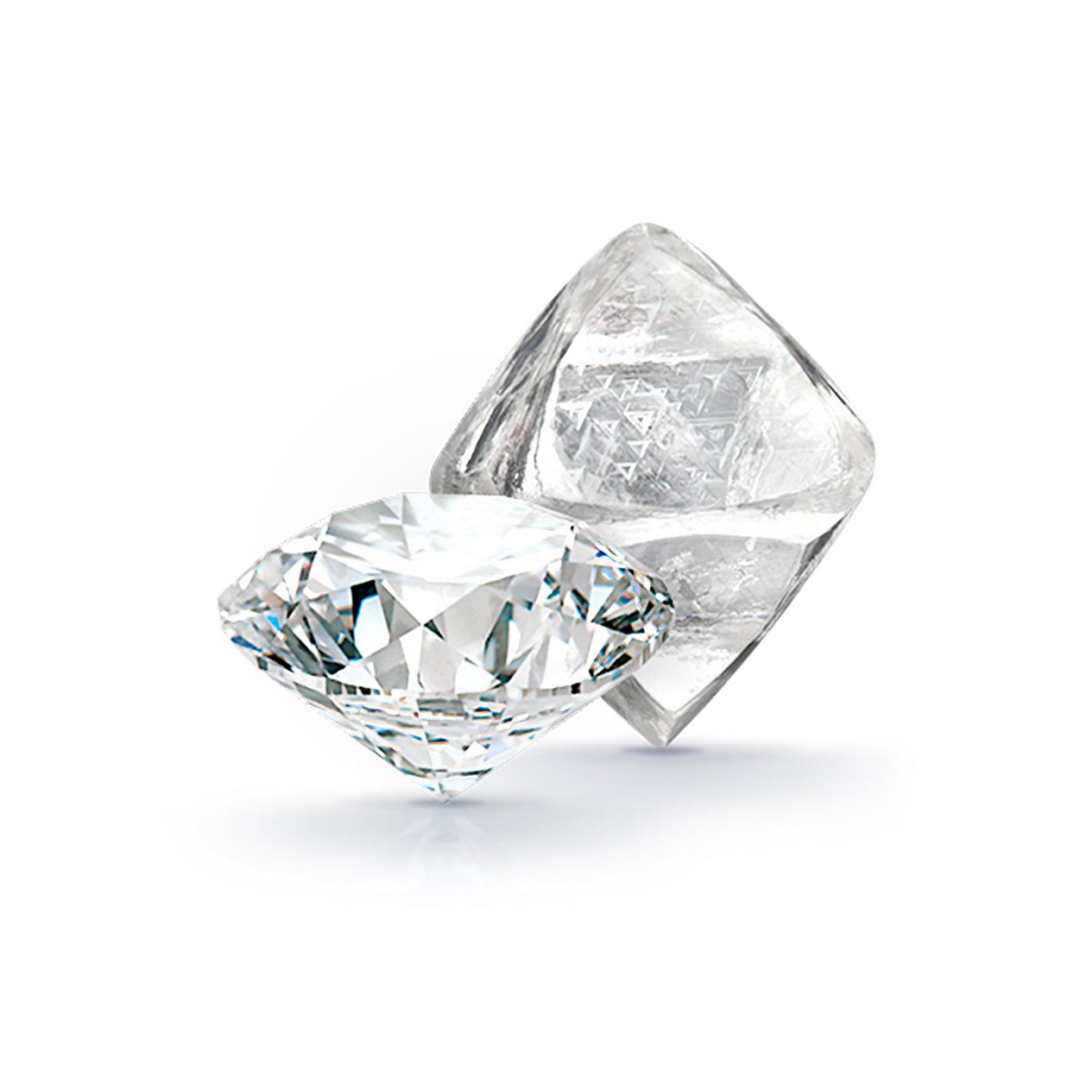Article: HOW TO MEASURE YOUR RING SIZE: A STEP-BY-STEP GUIDE

HOW TO MEASURE YOUR RING SIZE: A STEP-BY-STEP GUIDE
IF THE RING FITS...
If you would like to follow along with the article, download our ring size guide here.
Think you need to leave the comfort of your own home to gauge your ring size? Think again. Whether you wish to order gorgeous diamond jewellery online or hint to your beloved as to what your dream engagement ring looks like, discovering your ring size actually only requires a little DYI. But if that doesn’t quite fit your initial modus operandi of “doing-it-all-from-my-couch” and then subtlety leaving a browser open on your partner's laptop with a page of engagement rings pulled up, we hear you. But before you start measuring, know this: ideally your ring should fit comfortably on your finger. This means it’s fitted enough not to fall off but not lose to the point where it may slide over your knuckle without some force. Feeling more in the know? Here are five points to consider so your measurement is spot on.

ONE: YOUR KNUCKLE IS IN CHARGE
When it comes to engagement rings (or any piece of similar luxury diamond jewellery for your digits), it’s your knuckle and not the lower part of your finger that actually dictates the size of your ring. This is why: if you know your knuckle is on the larger side, you should order half a size bigger than what your finger alone indicates, otherwise you won't be able slide the ring on seamlessly. This is a good tip to consider when thinking of bridal diamond jewellery designs such as wedding bands. It’s also a must for eternity band engagement rings. If you (or your partner) choose one that’s a full eternity (in other words with a full circle of diamonds making up the band) it’s tricky to re-size the piece without losing some diamonds because it compromises the setting and the diamonds. It is advisable that both parties need to be present when making the decision to purchase a full eternity ring so that you get the perfect ring size. For more information on this matter, we advise you to contact us or book an appointment with CEO and Founder, Yair Shimansky for expert advice today.

TWO: TRY AND TRY AGAIN
For the sake of accuracy, measure your finger three to four times (at different points during the day, or even during the week or month) because the size fluctuates depending on temperature. It tends to be smaller the colder you are and gets more swollen if you're too hot. And you don’t want to rush the process and then find that the beautiful solitaire engagement ring (purchased to perfection) now doesn’t fit.

THREE: STRING ME ALONG
You can measure your ring size using either string or, perhaps a more common item in your home, dental floss. Take one of these items and wrap it around the base of your finger, marking where the string or floss meets its starting point with a pen. However, a word of caution - there’s one potential problem with this method: string and floss is stretchy, so try not to pull either too taut because you may be making your ring size smaller than what it would be. Next, line up the piece of string or floss with a ruler and take down its length in millimeters. From here, you’ll gage the number or letter - the symbol jewelers need to know when you select your ring’s size.

FOUR: NUMBERS OR LETTERS?
Symbol’s vary country-to-country. For instance, here in the US (as well as Canada), we work on a numbering system for ring sizing. This is a basic guide you can use to determine yours once you know your measurement in millimeters:
Standard ring sizes mean that every half a size matches up to a 0.4 millimeter increment. So, starting with size 3 equaling 14.1 mm, size 3.5 is equal to 14.5 mm, size 4 equal is to 14.9 mm, and so on.
The most common ring sizes for women are 6 (16.5 mm), 6.5 (16.9 mm), and 7 (17.3 mm). For men, the most common sizes are 10 (19.8 mm), 10.5 (20.2 mm), and 11 (20.6 mm).
However, if you live in the UK, Australia, or South Africa, and visit jewelers like Shimansky in Cape Town for instance, you’ll need to know your ring size in a letter symbol. This is how you discover whether you’re an M (reported to be the most common size for women in the UK) or an N (the most common in South Africa):
The formula is actually quite simple: just add .4mm to work out your letter. It makes sense that the smaller your measurement in millimeters, the higher on the alphabet you’ll be with A being 12mm. For example, if your measurement is 15.5 mm, then you’re a J, 15.9 means you’re a K and so on.
FIVE: ALL IS NOT LOST
Already know your ring size? Explore our stunning range of engagement rings and find the perfect one for you!
After all your measuring and calculating – and after that beautiful proposal and finally meeting the oval diamond engagement ring of your dreams – worst luck, it just doesn’t fit to perfection. And you’re not alone; around 40 percent of rings need resizing. While engagement rings average 2mm in width, the wider the ring, the more likely it is that its size just won’t be accurate.
So, even if you did get your ring size spot on, if you or your partner selected a wider shank, measurements may need to be adjusted slightly. Rest assured, Shimansky offers a complimentary first re-size to make things wonderfully smooth. To resize your ring, a small incision in the band is made to extend or tighten it as is needed. Once that’s completed, the gap is soldered and polished to seamlessly hide any evidence of alterations.
Here at Shimansky, we have excellent craftsmen who will customize the ring size to fit your finger to perfection.











Leave a comment
This site is protected by reCAPTCHA and the Google Privacy Policy and Terms of Service apply.